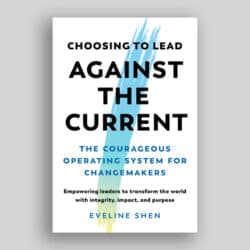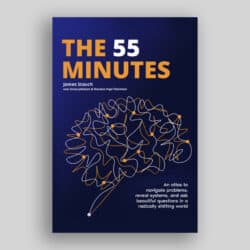In her strongly argued new book, author Beth Breeze takes on three main critiques of the urge to give and offers her own prescription for how philanthropy can be improved.
In Defence of Philanthropy, by Beth Breeze. Agenda Publishing, Newcastle-upon-Tyne; 2021; 175 pp; ISBN HB 978-1-78821-261-8.
Is “big” philanthropy sometimes questionable? Should it be held to account more often? And can its practice be improved? Beth Breeze, the author of a strongly argued new book on the critics of philanthropy, would herself answer yes to all three questions. But she does not align herself with the critics. Instead, she has taken up her author’s pen to defend the act and pursuit of philanthropy out of concern that the major critiques in current circulation are neither nuanced nor well-founded.
Worse, the critics, in her view, are not receiving enough pushback to avoid a consequence that benefits no one: a decision by larger donors to stop giving altogether. In her words, “philanthropy is not perfect but nor is it inherently problematic. It is improvable but not illegitimate, and it has value that urgently needs articulating and defending.” This book is her answer to the critics.
Criticism of “big” philanthropy is not new. Breeze, the director of the Centre for Philanthropy at the University of Kent, is a scholar of philanthropic studies. As she points out, attacks on philanthropy are of long standing, and she offers evidence from the historical record dating to the Middle Ages of criticism of big donors, which has evolved over time from scorning the wealthy for trying to take “shortcuts to heaven,” to scorning them for burnishing their image and pursuing vanity projects, and more recently to attacking them for enabling injustice by propping up the capitalist system that allows for extraordinary wealth accumulation. Her brief review of historical critiques concludes with an observation that while context has changed, three types of critiques have been constant: that philanthropy is undemocratic, that it is ineffective or non-redistributive, and that philanthropists’ motives are suspect. She sums up these critiques; dubs them, respectively, the academic, the insider, and the populist critique; and refutes each in turn.
Breeze’s concern stems from her fear that increasingly loud criticism of ‘big giving’ will undermine the legitimacy of all philanthropy.
Breeze is both a scholar and a skilled debater. The book is an erudite and trenchant exposition of her argument. She organizes her material with clear and easy-to-follow logic. Each of the three principal critiques is examined in a separate chapter, and she marshals her points against each just as a debater identifies and counters the points made by her opponent. At the outset, she helpfully sets out the “nutshell, 19-word version” of her thesis: “hyper-criticism of philanthropy underestimates the complexity of its target and carries the significant risk of curtailing the philanthropic impulse.”
Breeze’s concern stems from her fear that increasingly loud criticism of “big giving” will undermine the legitimacy of all kinds of philanthropy, including the making of smaller gifts, and will harm the beneficiaries of non-profit work if philanthropic funding is deterred. She speaks passionately about this from her own direct experience as a fundraiser and charity manager – which she was before becoming an academic. Her worry is that generalized cynicism about philanthropy “risks eroding cultural norms about helping others and creating a perverse incentive to hoard rather than share wealth.” The empirical evidence she cites for the motivations, concerns, and perceptions of donors, recipients, and the public (including media) is drawn from her many studies, interviews, surveys, and analyses of philanthropic data and academic and media discussions of philanthropy. While her tone is personal, her words are backed by research and by knowledge of the literature, which she quotes extensively.
The three sets of critiques framed at the heart of her argument when taken together address the “how,” the “what,” and the “why” of philanthropy, as Breeze puts it. The so-called academic critiques focus on how philanthropy (particularly in the endowed foundation form) entrenches unequal power structures and undermines democratic principles. The “insider” critique focuses on the practice of philanthropy, particularly by large donors and structured philanthropy, and examines what is ineffective giving. The “populist” critique focuses on why donors (especially large donors) give – their motivations, personal characteristics, and self-interest. As Breeze deconstructs each category of critique, she acknowledges that scrutiny “can helpfully reveal the nature of our shared expectations for philanthropic action and the values that surround it, highlight assumptions about the ‘proper role’ for philanthropy in contemporary society and raise important questions about power, transparency, inclusion and obligation.” But she opposes the critical generalizations and exaggerations that, while catchy and compelling, understate or miss entirely the complexity, diversity, breadth, and potential for good of philanthropy.
Breeze offers her own prescription for a response to the critics and a way to improve philanthropy.
The bulk of the book is taken up by three chapters outlining each of the critiques in turn. Each critique comes from a different source. The academic critique, as Breeze describes it, comes from political philosophers such as Robert Reich at Stanford University and others who argue that philanthropy is undemocratic, that it is an exercise in power, and that it is insufficiently concerned with inequality. The insider critique comes from people within the philanthropy sector such as advisors, infrastructure bodies, and non-profit managers who argue that philanthropy should be more strategic, rational, and even business-like. The populist critique comes from a range of critics – including journalists, “media polemicists,” and social media influencers – who, in Breeze’s view, caricature philanthropists through ad hominem attacks as self-interested, ridiculous, and immoral players. Breeze doesn’t hide her outrage here. While academic and insider critiques typically write from a place of constructive critique, she says, populist critique is an “evidence-free, hyperbolic zone.”
She pushes back more gently on the academic and insider critiques, while acknowledging some of their truth. She believes that concerns about the exercise of power are overstated, that philanthropy is sufficiently regulated by democratic governments, and that philanthropy can have many legitimate goals other than the amelioration of inequality. She also believes that philanthropy can be effective even if it is not organized according to entirely rational or business-like methods, although it can always be improved by careful thought and seeking of advice and evidence. Breeze reserves her strongest words for the populist critics, suggesting that they are “virtue hoarders,” that they deny the rich the right to enjoy being philanthropic, or to be given credit when they are, without aspersions on their motives or their characters.
The book is a succinct, clear, and reasoned defence of the act and impulse to give.
This leads into her final argument on why attacks on philanthropy seem to be more effective now and what to do about it. In her view, the attacks are sticking these days for several reasons: because there is some truth in the academic and insider critiques; because there is no visible pushback from donors and scholars, particularly on the populist critique; and because current attacks on big philanthropy reflect greater societal concerns about wealth and inequality, especially evident since the beginning of the pandemic. Breeze offers her own prescription for a response to the critics and a way to improve philanthropy. Her plan proposes elimination of personal attacks and decoupling of the critique of wealth from that of philanthropy. Most importantly, she proposes changes to the practice of philanthropy: more ethical philanthropy, responding to the academic critique; more effective philanthropy, responding to the insider critique; and more trust-based philanthropy, responding to the populist critique. None of her prescriptions are new or exceptional. They have been suggested by many philanthropy observers and practitioners, even more loudly in the past two years. They cover a range of actions, from more transparency to more collaboration, from greater diversity and inclusion to simplification and greater flexibility, from more listening and learning to being more aware of the need for allyship in the service of social justice. These are recommendations that should be familiar to foundations and larger donors.
While the solutions or remedies for the critiques that Breeze describes are relatively familiar, she has nonetheless done a great service to the supporters of philanthropy with this book. It is a succinct, clear, and reasoned defence of the act and impulse to give. I note that it is an Anglo-centric argument. Almost all of Breeze’s references and citations are to American or British writers and critics. And many of her arguments relate specifically to the very large donors and foundations who are so prominent in the philanthropy landscape in the United States or in the United Kingdom, not to the smaller individual givers. Yet we can connect many of these criticisms to our practices of “bigger” philanthropy in Canada. We have heard some of the same accusations of elitism, power imbalances, opacity, and lack of flexibility lobbed at Canadian givers. Breeze’s prescriptions are valuable for Canadian philanthropists too. Her voice is one that should resonate for all who are concerned about the state of philanthropy in Canada. We need more defenders of the choice to give, whether it is much or little. As Breeze concludes, “philanthropy is imperfect, messy and complex, but it is better than a world without philanthropy.”


